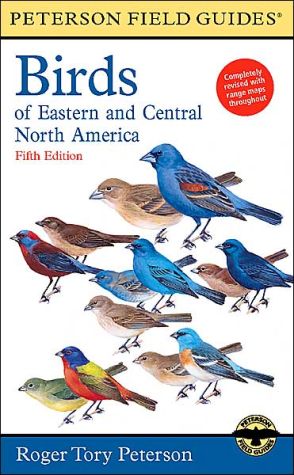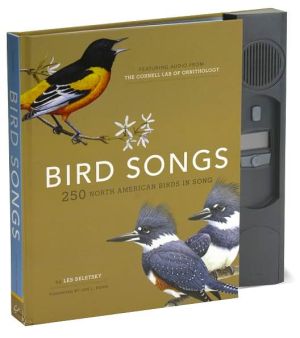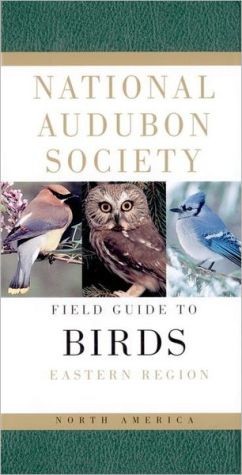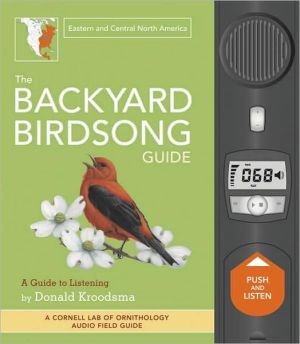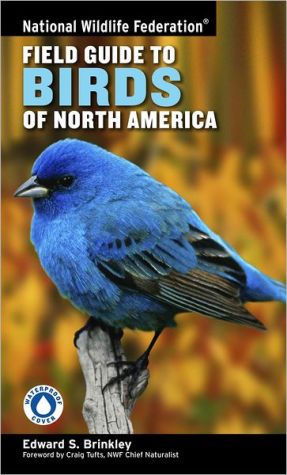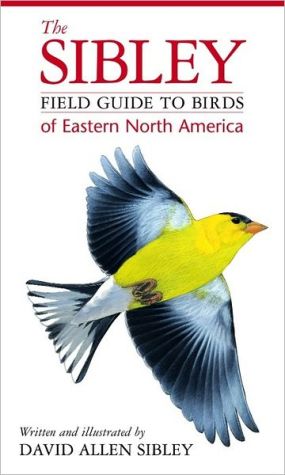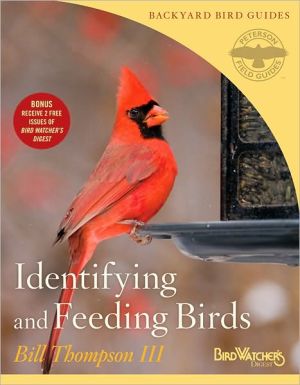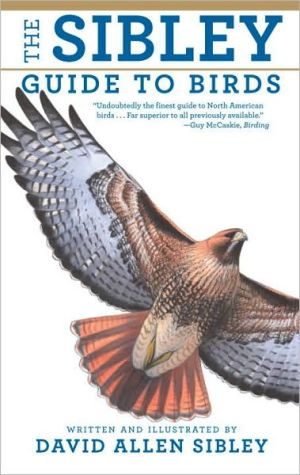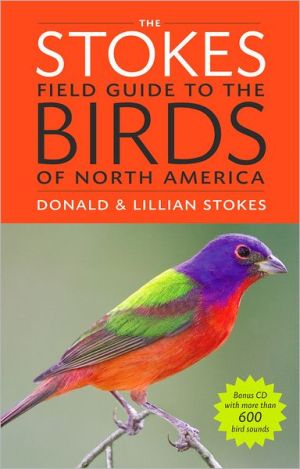A Field Guide to the Birds of Eastern and Central North America (The Peterson Field Guide)
Roger Tory Peterson had already made his mark with his innovative field guide when he conducted DDT research during World War II. His friend and fellow naturalist Rachel Carson built on these efforts and eventually wrote Silent Spring, a landmark text that, along with Peterson's field guide, jump-started the modern environmental movement.\ By combining the tireless observation of a scientist with the imaginative skills of an artist and writer, Peterson created a field guide that Robert...
Search in google:
Roger Tory Peterson had already made his mark with his innovative field guide when he conducted DDT research during World War II. His friend and fellow naturalist Rachel Carson built on these efforts and eventually wrote Silent Spring, a landmark text that, along with Peterson’s field guide, jump-started the modern environmental movement.By combining the tireless observation of a scientist with the imaginative skills of an artist and writer, Peterson created a field guide that Robert Bateman, in his foreword to the fifth edition, says was the doorway for millions of people into the wonderland of natural history. The Peterson Identification System has been used in the more than fifty books that make up the Peterson Field Guide series. Peterson’s magnum opus, now in its fifth edition, created the trail for countless field guides to follow. They are still following year by year, but his is the standard by which all other field guides are judged.On the morning of July 28, 1996, Roger Peterson was painting his final bird plate. He died peacefully in his sleep later that day. It is fitting that his final work—a culmination of more than sixty years of observing, painting, and writing—should be this one, a revision of the guide that started his legacy. Booknews This field guide for bird watchers features over 1,800 detailed color illustrations of birds of eastern and central North America with descriptions of their appearance, voice, habitat, and range on the facing pages. The brief notes on general range are keyed by number to three-color range maps in the rear of the book. A mini-tutorial on bird identification is found in the introduction. The late naturalist and artist Roger Tory Peterson developed the Peterson Identification System used by birders nationwide since 1934. Annotation c. Book News, Inc., Portland, OR (booknews.com)
CHIMNEY SWIFT Chaetura pelagica Common\ 5–51⁄2" (12–14 cm) Like a cigar with wings. A blackish swallowlike bird with long, slightly curved, stiff wings and stubby tail. It appears to beat its wings not in unison but alternately (actually this is an illusion); effect is more batlike, unlike skimming of swallows. They seem to fairly twinkle, gliding between spurts, holding wings bowed in a crescent. \ Voice: Loud, rapid, ticking or twittering notes.\ Range: S. Canada to Gulf of Mexico. Winters in Peru.\ Habitat: Open sky, especially over cities, towns; nests and roosts in chimneys (originally in large hollow trees and cliff crevices).
Map of Area Covered by This Book ii Foreword xi Preface xvii Acknowledgments xixIntroduction 1 Life List 14 Loons: Gaviidae 26 Grebes: Podicipedidae 28 Shearwaters: Procellariidae 30 Storm-Petrels: Hydrobatidae 34 Casual or Accidental Seabirds and Coastal Species 34 Pelicans: Pelecanidae 38 Frigatebirds: Fregatidae 38 Gannets, Boobies: Sulidae 40 Tropicbirds: Phaethontidae 40 Cormorants: Phalacrocoracidae 42 Anhingas: Anhingidae 42 Loons in Flight 44 Cormorants in Flight 44 Herons, Egrets, Bitterns: Ardeidae 46 Limpkins: Aramidae 52 Ibises and Spoonbills: Threskiornithidae 52 Flamingoes: Phoenicopteridae 54 Storks: Ciconiidae 56 Cranes: Gruidae 56 Accidental Long-legged Wading Birds 58 Swans, Geese, Ducks: Anatidae 60 Swans: Anserinae 60 Geese: Anserinae 60 Geese and Swans in Flight 64 Whistling-Ducks: Dendrocygninae 66 Dabbling Ducks: Anatinae 66 Diving Ducks: Aythyinae 72 Stiff-tailed Ducks: Oxyurinae 78 Merganser: Merginae 80 Flight Patterns of Ducks 82 Accidentals from Eurasia 90 Accidentals from the Tropics 90 New World Vultures: Cathartidae 92 Caracaras and Falcons: Falconidae 92 Caracaras: Caracarinae 92 Hawks, Kites, Accipiters, Harriers, and Eagles: Accipitridae 96 Kites: Elaninae and Milvinae 96 Accipiters (Bird Hawks): Accipitrinae 98 Buteos (Buzzard Hawks): Buteoninae (in part) 100 Buteos Overhead 106 Harriers: Circinae 108 Blackish Birds of Prey Overhead 110 Eagles: Buteoninae (in part) 112 Ospreys: Pandionidae 112 Eagles, Osprey, and Vultures Overhead 114 Falcons: Falconidae 116 Accipiters and Falcons Overhead 118 Pheasant, Grouse, Turkey, and Allies: Phasianidae 120 Grouse, etc.: Tetraoninae 122 New World Quails: Odontophoridae 124 Ducklike Swimmers (Coots, Gallinules): Rallidae (in part) 126 Rails, Gallinules, and Coots: Rallidae 128 Plovers: Charadriidae 132 Plovers and Turnstone in Flight 136 Large Shorebirds in Flight 144 Oystercatchers: Haematopodidae 146 Avocets and Stilts: Recurvirostridae 146 Sandpipers and Phalaropes: Scolopacidae 150 “Peeps” 158 Snipe, Sandpipers, etc., in Flight 160 Sandpipers, Phalaropes in Flight 162 Phalaropes: Phalaropodinae 164 Accidental Shorebirds from Eurasia 166 Jaegers: Stercorariidae 170 Gulls: Laridae 172 Small Hooded Gulls: Adults 180 Immature Gulls: Larger Species 182 Immature Gulls: Smaller Species 184 Terns: Sterninae 186 Skimmers: Rynchopinae 190 Auks, etc.: Alcidae 192 Pigeons and Doves: Columbidae 196 Parrots, Parakeets: Psittacidae 198 Cuckoos: Cuculidae 200 Owls: Strigidae and Tytonidae 202 Nighthawks, Nightjars: Caprimulgidae 208 Nighthawks: Caprimulgidae 210 Hummingbirds: Trochilidae 212 Kingfishers: Alcedinidae 214 Woodpeckers: Picidae 216 Tyrant Flycatchers: Tyrannidae 222 Accidental Flycatchers 228 Larks: Alaudidae 230 Pipits: Motacillidae 230 Swallows: Hirundinidae 232 Swifts: Apodidae 234 Chickadees and Titmice: Paridae 236 Nuthatches: Sittidae 238 Creepers: Certhiidae 238 Wrens: Troglodytidae 240 Gnatcatchers (Polioptilinae) and Kinglets (Regulidae) 242 Bulbuls: Pycnonotidae 242 Thrushes: Turdidae 244 Mockingbirds and Thrashers: Mimidae 248 Crows, Jays, etc.: Corvidae 252 Shrikes: Laniidae 254 Waxwings: Bombycillidae 254 Vireos: Vireonidae 256 Wood-Warblers: Parulidae 260 Confusing Fall Warblers 278 Tanagers: Thraupidae 282 Grosbeaks, Finches, Sparrows, Buntings: Fringillidae, Emberizidae, Cardinalidae 284 Blackbirds, Orioles, etc.: Icteridae 310 Starlings: Sturnidae 312 Orioles 316 Old World Sparrows: Passeridae 318 Miscellaneous Finchlike Birds 318 South Texas Specialties 320 More South Texas Specialties 322 Accidentals from the Tropics 324 Accidentals and Escapes from Eurasia 326 Exotics 328Range Maps 333 Index of Scientific Names 411 Index of Common Names 419
\ From Barnes & NobleRoger Tory Peterson is a legend among birders, and for good reason. This is his final book -- he died peacefully after spending the day painting for this guide -- and it reflects Peterson's decades-long experience creating one of the most widely used identification systems for birds.\ \ \ \ \ From The CriticsThis field guide for bird watchers features over 1,800 detailed color illustrations of birds of eastern and central North America with descriptions of their appearance, voice, habitat, and range on the facing pages. The brief notes on general range are keyed by number to three-color range maps in the rear of the book. A mini-tutorial on bird identification is found in the introduction. The late naturalist and artist Roger Tory Peterson developed the Peterson Identification System used by birders nationwide since 1934. Annotation c. Book News, Inc., Portland, OR (booknews.com)\ \
